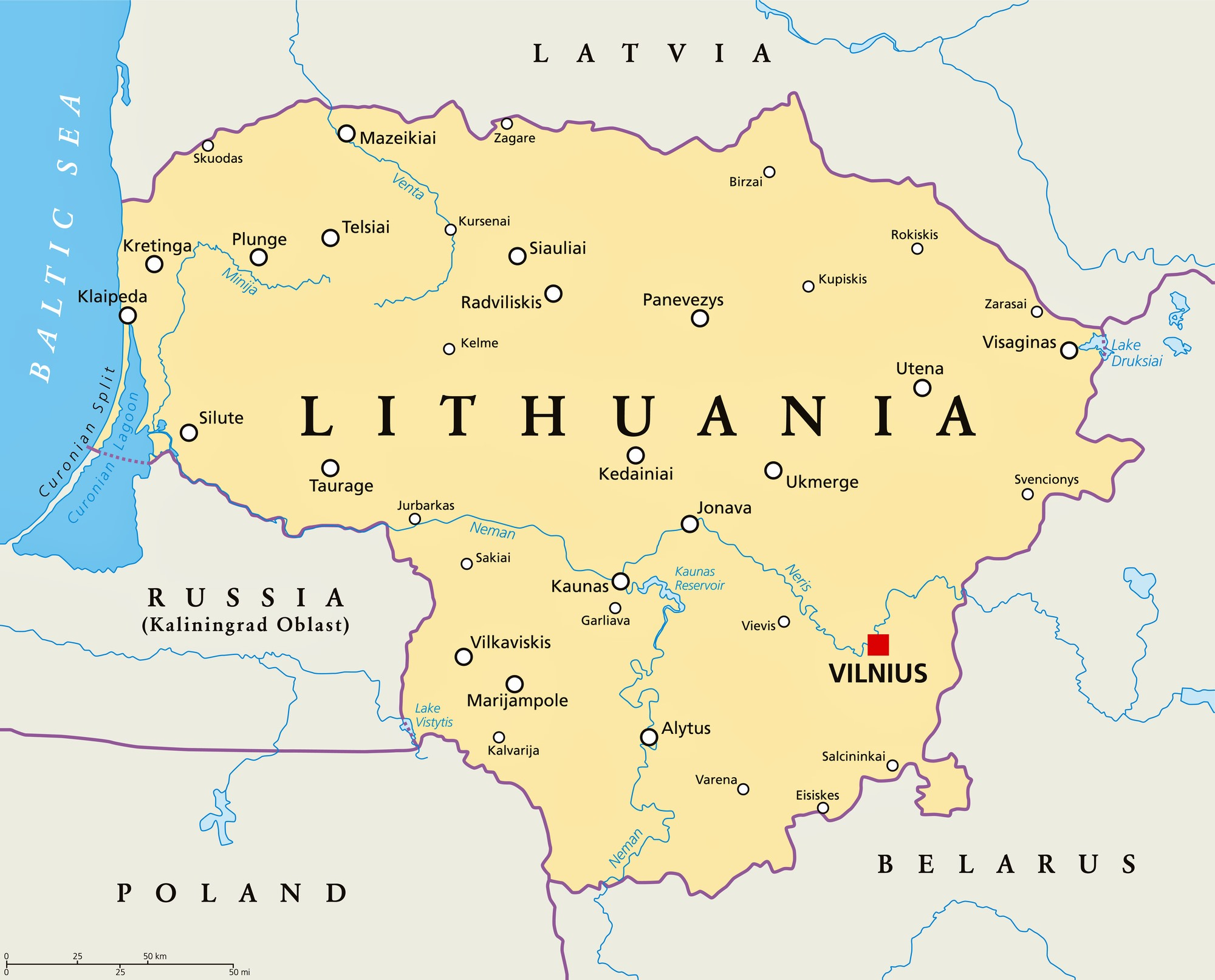Description

Disclaimer: Copyright infringement not intended.
Context
Recent NATO military exercise conducted in Lithuania.
Details
- The recent NATO military exercise involving a German convoy in Lithuania highlights the ongoing security concerns in Eastern Europe.
- The exercise aimed to demonstrate NATO's commitment to countering potential threats, particularly from Russia.
NATO Military Exercise in Lithuania
- A German convoy of 1,000 troops, tanks, drones, and armored vehicles traveled to a Lithuanian military compound in Pabrade.
- The exercise involved integration between German and Lithuanian troops and began with reconnaissance activities.
- It later transitioned into a simulated battle, where NATO showcased its capabilities and successfully won the exercise.
NATO's Response to a More Dangerous Russia
- The exercise was intended to reassure Baltic nations and other countries on Europe's eastern flank about rapid reinforcement and collective defense.
- NATO aims to counter a perceived increase in Russian aggression and its efforts to maintain influence in the region.
- The Russian invasion of Ukraine has heightened concerns among NATO's frontline states.
Enhancing Deterrence and Defense
- NATO is developing detailed war plans, committing troops, equipment, and financial resources not seen since the end of the Cold War.
- The military alliance is moving towards "deterrence by denial," which includes deploying more troops along the Russian border

Plans for Troop Deployment
- Current battle groups along the eastern flank consist of 10,232 troops.
- Leaders at the Vilnius summit are expected to approve plans to increase troop numbers to 4,000 to 5,000 in each of the eight countries along the eastern flank.
- The troops will have defined tasks and prepositioned equipment to enhance deterrence and rapid response capabilities.
Challenges and Long-Term Goals
- NATO recognizes the need to reach higher levels of forces with improved readiness.
- The alliance must exercise against its plans, acquire necessary capabilities, and ensure the commitment of larger allies.
- The process of building up forces and reaching the desired levels will take considerable time.
Importance of Regional Defense Plans
- Regional defense plans outline the responsibilities and equipment required for each country to defend its assigned territory.
- NATO aims to transition from air policing to active air defense and enhance its understanding of modern equipment vulnerabilities.
Addressing Vulnerabilities and Baltic Concerns
- Despite reassurances, Baltic nations feel vulnerable due to their size and proximity to Russia.
- Their warnings about Russian intentions were sometimes overlooked by larger allies.
- The passage emphasizes the urgency of integrating Ukraine into NATO to ensure regional stability and security.
About Lithuania

Disclaimer: Copyright infringement not intended.
- Lithuania is a country located in Northern Europe, bordered by Latvia to the north, Belarus to the east and south, Poland to the south, and the Baltic Sea to the west.
- It is the southernmost of the Baltic states and has a rich historical and cultural heritage.
Geography and Natural Features
- Lithuania covers an area of approximately 65,300 square kilometers and has a diverse landscape.
- The country is characterized by low-lying plains, forests, and numerous lakes, with the Nemunas River being the longest.
- The Curonian Spit, a UNESCO World Heritage site, is a unique sand dune formation along the Baltic Sea coast.
History and Independence
- Lithuania has a long history, dating back to the medieval period when it was the Grand Duchy of Lithuania, one of the largest and most powerful states in Europe.
- The country experienced periods of foreign domination, including rule by Poland, Sweden, and the Russian Empire.
- Lithuania declared independence in 1918, becoming one of the first countries to break away from the Soviet Union in 1990.
Culture and Language
- The Lithuanian language, one of the oldest surviving Indo-European languages, is the official language of the country.
- Lithuania has a vibrant cultural scene, with traditional folklore, music, dance, and art playing an essential role in preserving national identity.
- The capital city, Vilnius, is known for its UNESCO-listed Old Town and diverse architectural styles.
Economy and European Union Membership
- Lithuania has a mixed-market economy with a strong focus on manufacturing, services, and high technology sectors.
- The country experienced significant economic growth following its accession to the European Union in 2004.
- Lithuania adopted the Euro as its currency in 2015.
Education and Innovation
- Lithuania has a well-developed education system, with a high literacy rate and a strong emphasis on science and technology education.
- The country is known for its achievements in the fields of information technology and innovation.
- Vilnius and Kaunas are major centers for research and technology development.
Membership in International Organizations
- Lithuania is a member of various international organizations, including the United Nations, NATO, the European Union, and the Council of Europe.
- The country actively participates in regional cooperation initiatives, such as the Baltic Assembly and the Nordic-Baltic Eight (NB8).
Tourism and Cultural Heritage
- Lithuania attracts tourists with its rich historical and cultural heritage, including well-preserved castles, old towns, and traditional festivals.
- The Curonian Spit, Trakai Castle, and Hill of Crosses are among the popular tourist destinations.
- The country is known for its natural beauty, national parks, and outdoor recreational activities
|
PRACTICE QUESTION
Q) Consider the following statements regarding Lithuania:
- Lithuania is the northernmost Baltic state.
- Lithuanian is a Slavic language.
Select the correct statement using the codes below:
(a) 1 only
(b) 2 only
(c) Both 1 and 2
(d) Neither 1 nor 2
Answer: A
|

https://indianexpress.com/article/explained/explained-global/vilnius-summit-nato-fight-a-european-war-8821669/













